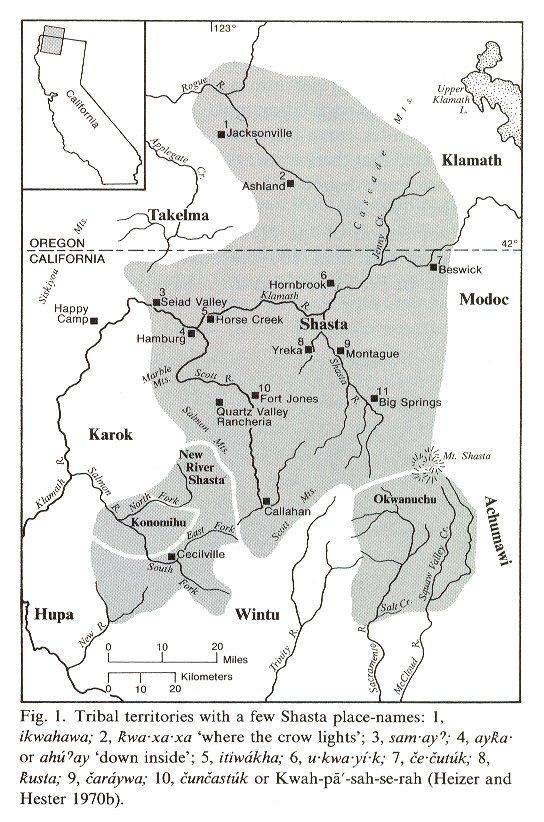Konomihu
The traditional Konomihu language area is on the lower Salmon River. By the 20th century, descendants of the Konomihu identified as Shasta. Even in pre-contact times, there were likely few speakers of the language (Kroeber 1925).
Konomihu is a member of the Shastan language family, the other members of which are New River Shasta, and Okwanuchu, and Shasta. Together the Shastan languages comprise one branch of the hypothesized Hokan language family. This additionally includes Chimariko, Esselen, Karuk, the Palaihnihan languages (Achumawi and Atsugewi), the Pomoan languages (Central Pomo, Eastern Pomo, Kashaya, Northeastern Pomo, Northern Pomo, Southeastern Pomo, and Southern Pomo), Salinan, Washo, Yana, and the Yuman languages (Cocopa, Kiliwa, Kumeyaay, Maricopa, Mojave, Pai, Paipai, and Quechan).
Selected archival materials at Berkeley
Further reading
- Golla, Victor. 2011. California Indian languages. Berkeley: University of California Press.
- Larsson, Lars J. 1987. Who Were the Konomihu? International Journal of American Linguistics 53:232-235. [PDF]
- Silver, Shirley. 1980. Shasta and Konomihu. In Kathryn Klar, Margaret Langdon, and Shirley Silver, eds. American Indian and Indoeuropean studies: Papers in honor of Madison S. Beeler, pp. 245-263. The Hague: Mouton. [PDF - may not be publicly available]
